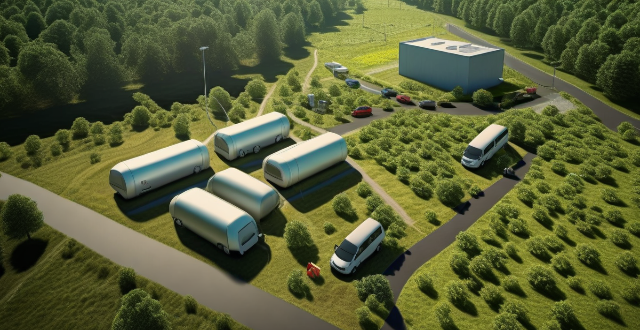Electric vehicle (EV) technology is transforming the transportation industry through environmental benefits, economic impacts, technological advancements, infrastructure changes, policy and regulation, and market dynamics. Key impacts include reduced greenhouse gas emissions, improved energy efficiency, lower operating costs, job creation, battery innovations, autonomous driving, development of charging stations, smart grid integration, government incentives, stricter emission standards, growing consumer demand, and a competitive market landscape. As EV technology evolves, it will continue to shape the future of mobility and personal transportation.

Impact of Electric Vehicle Technology on the Transportation Industry
Electric vehicle (EV) technology is revolutionizing the transportation industry in numerous ways. This transformation is driven by advancements in battery technology, reduction in costs, and increasing awareness about environmental sustainability. Below are some key impacts of electric vehicle technology on the transportation sector:
Environmental Benefits
- Reduction in Greenhouse Gas Emissions: One of the most significant benefits of electric vehicles is their reduced carbon footprint compared to traditional gasoline or diesel-powered vehicles. EVs produce zero tailpipe emissions, contributing to cleaner air and a lower overall carbon footprint.
- Improved Energy Efficiency: EVs convert over 60% of the electrical energy from the grid to power at the wheels, whereas conventional gasoline vehicles only convert about 20% of the energy stored in gasoline into driving force.
Economic Impacts
- Lower Operating Costs: Although the initial purchase price of an EV may be higher than that of a conventional car, the operating costs are significantly lower due to reduced fuel and maintenance expenses.
- Creation of New Jobs: The growth in the EV market has led to the creation of new jobs in areas such as battery manufacturing, EV charging infrastructure, and software development for autonomous driving technologies.
Technological Advancements
- Battery Innovations: Ongoing research and development in battery technology have resulted in longer ranges and faster charging times for EVs.
- Autonomous Driving: Many EV manufacturers are integrating autonomous driving technologies into their vehicles, pushing the boundaries of safety and convenience in personal transportation.
Infrastructure Changes
- Charging Stations: The need for widespread charging infrastructure has led to significant investments in public and private charging stations, altering urban planning and energy consumption patterns.
- Smart Grid Integration: The integration of EVs with smart grids allows for optimized energy use, where vehicles can draw power from the grid during off-peak hours and potentially supply power back to the grid during peak demand periods.
Policy and Regulation
- Government Incentives: Numerous governments offer incentives for EV purchases and usage, such as tax credits and rebates, to encourage adoption.
- Emission Standards: Stricter emission standards worldwide are making the shift towards electric vehicles necessary for manufacturers to comply with these regulations.
Market Dynamics
- Consumer Demand: As consumers become more environmentally conscious and recognize the economic benefits of EVs, demand for these vehicles is rising.
- Competitive Landscape: Traditional automakers are competing with new entrants like Tesla to capture market share in the growing EV segment.
In conclusion, electric vehicle technology is not just an alternative mode of transportation; it's a catalyst for broader changes across environmental policies, economic structures, technological advancements, infrastructure development, and consumer behavior within the transportation industry. As this technology continues to evolve, its influence will only deepen, shaping the future of mobility and redefining our relationship with personal transportation.